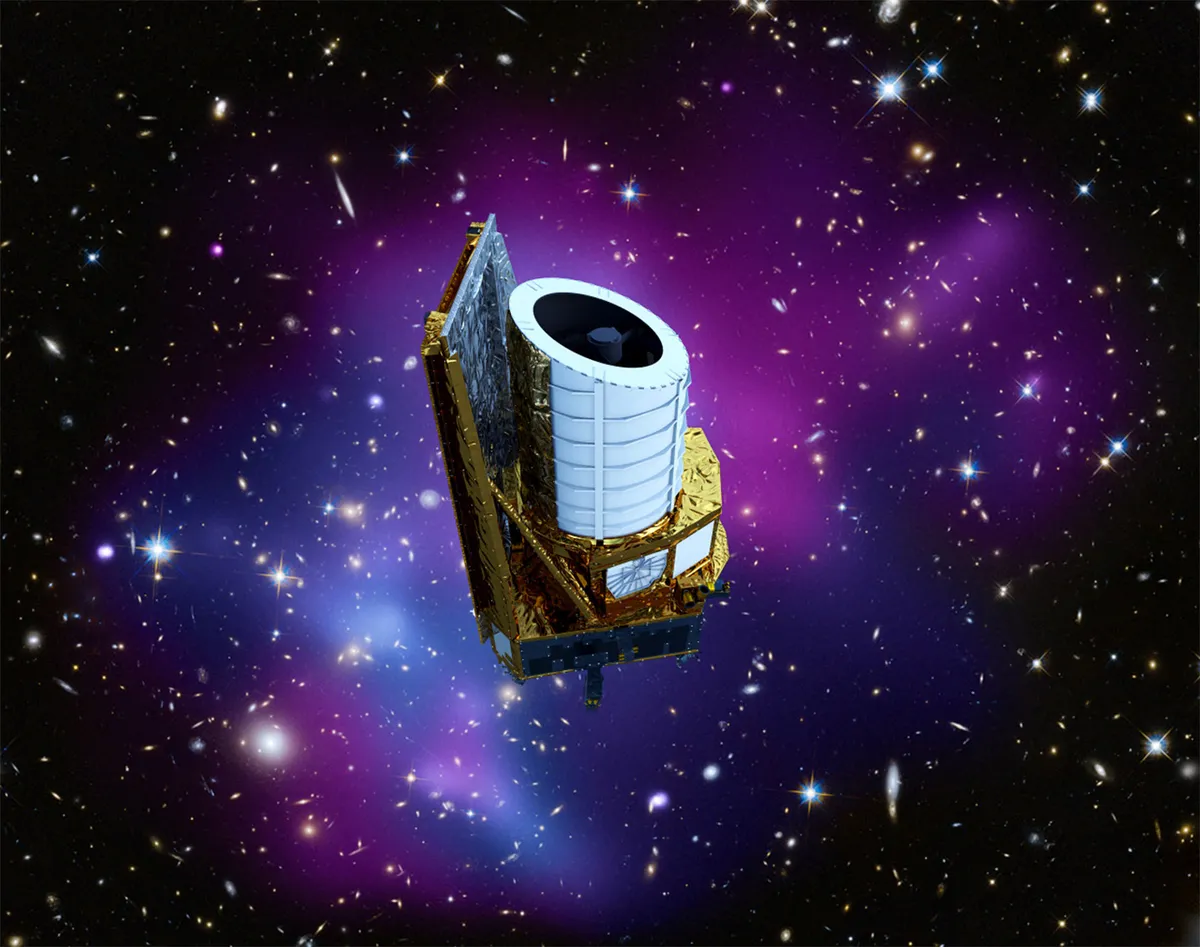The Euclid space telescope launched in 2023 with the goal of taking images and spectral data in optical and infrared wavelengths, covering around one third of the sky.
Euclid is able to image objects with fantastic sharpness because the telescope is in space and responsive to very low brightnesses.
One of Euclid’s goals is to map the Universe’s structure and probe the nature of dark matter and dark energy on the cosmic scale.

Because it can see such a wide area, Euclid can give astronomers an idea of how astronomical objects are clustered on a cosmic scale.
But it also includes other scientific investigations, like one project that looked at a population of dwarf galaxies.
The Euclid space telescope has only just begun its six-year-long mission to map the night sky, but it’s already revealed a treasure trove of new galaxies.
Francine Marleau is an associate professor at the University of Innsbruck, Austria, working on extragalactic astronomy, including galaxy formation and evolution.
We spoke to her about her work using the Euclid telescope, and what she found.

What did your team discover?
We discovered around 2,600 low-mass, very low-surface-brightness, faint galaxies from data released by the Euclid space mission.
These are historically very hard to find because they’re so small and faint, but they’re the most numerous galaxies in the Universe.
Our dataset was from only 0.4% of the total survey we will eventually get from Euclid, so this was an initial survey of a much larger dataset.
What is a dwarf galaxy?
Dwarf galaxies are small, low-mass galaxies. This means that in terms of the stars and dark matter they contain, they’re at the lower end of the mass spectrum.
We consider these small galaxies to be dwarf galaxies when their stellar mass is around a billion times the mass of our Sun or less.
Usually, these galaxies orbit larger galaxies, like the Magellanic Clouds orbit the Milky Way.

Can you confirm that you have found dwarf galaxies?
This is difficult, because we’re working essentially with an image, and we don’t know how far away these objects are.
In cases like this, it’s hard to work out their mass.
What we found is that some of these objects had a spectrum – a light-based fingerprint – from which you can work out how distant they are.
From that, you can work out their mass, and we found that they matched the masses we expected for dwarf galaxies.
What have you learned about dwarf galaxies from your discovery?
This is just a first glimpse, but we’ve found within the discovered galaxies a subgroup that have blue central regions, sometimes with quite a strange structure.
This is a sign of star formation.
From this, we think we’re witnessing a fascinating transitional period in a galaxy’s life.
Some of the other dwarfs have a central – or nuclear – star cluster, which are some of the densest stellar objects in the Universe and can sometimes also host a central massive black hole.
We think these may be in the process of forming star clusters. This is one of the important things Euclid enables.
When you see a distant dwarf galaxy from a ground-based telescope, you just see a fuzzy object.
But from Euclid, you can see the substructures inside these galaxies.

How do they differ from bigger galaxies, those more than a billion times the Sun’s mass?
There’s no general answer for all galaxies, but one thing we think is important is the dark matter content of the galaxies relative to their stars.
We find that dwarf galaxies have the highest ratio.
Another interesting feature of dwarf galaxies is the ratio of stars they form per year compared to their total mass.
Dwarf galaxies have the highest star-formation rate per unit mass of all galaxy types in the Universe.
What’s next for your research team?
As we’ve only looked at part of the data, our next goal is to do a full analysis of the data that’s been released by Euclid.
We also hope to optimise our detection technique and follow up these dwarf galaxies with ground-based spectroscopic observations, using telescopes like the European Southern Observatory’s Very Large Telescope.
This interview appeared in the June 2025 issue of BBC Sky at Night Magazine

